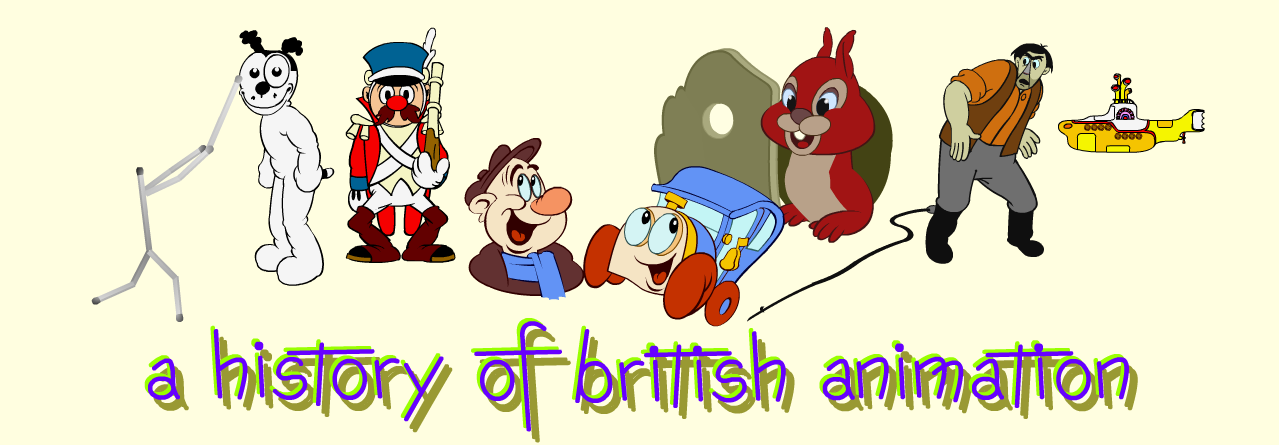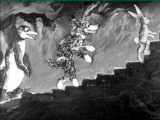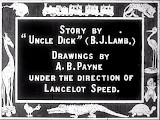

|
 | ASTRA FILMS LTD(1919-23) |  |
|||||||||||||||||||||||||||||||||||||||||||||||||||||||||||||||||||||||||||||||||||
Live-action FilmsOn 2 January 1919 The Bioscope, the trade paper for film exhibitors, noted: Mr Charles Wilcox, lately supervising traveller for Famous Films, is to open out at 5, Queen Victoria Street, Leeds, on his own, as Astra Films. A Yorkshire area distribution company primarily releasing American films, Astra Films quickly proved successful, and on 24 May 1919 Astra Films Limited was formed to take over the business; the directors being Charles Wilcox and his younger brother Herbert, along with H W Thompson and J G Smart. As business grew, the Wilcox brothers opened an office in London, and in January 1920 Charles announced the formation of a sister-enterprise, the Astra Film Producing Company, to produce its own British films. In an article in The Bioscope on 15 April 1920 Herbert unveiled a programme of a dozen productions planned for the year ahead and announced: Our studio is now being built in sections and will be erected on one of three possible sites within twenty minutes of London. It will have a clear floor space of 160 ft. by 80 ft., in addition to extensive technical departments, workshops, greenrooms, and other offices. We are importing from the States a complete lighting installation of the most modern type, including a novel spotlight equipment. However, I have not yet found any record of an Astra studio per se. The first film to go into production, The Breed of the Treshams, was shot, according to The Bioscope, at the "R W [Rex Wilson] Studios, at Hackney" — Astra's "temporary" studio address was given as "Tuileries Road, Hackney Road" (properly, 74 Tuilerie Street, Hackney Road) and it was possibly the old Union Jack Studio; production commenced on 8 July 1920. In 1921 Thompson started up his own production company, H W Thompson Productions, to make films for Astra distribution, using the British & Colonial Studios in Hoe Street, Walthamstow. In the spring of 1922 a new limited company, Astra National Productions, was formed without Thompson on the board, to take over the business from the Astra Film Producing Co. Cinema manager and promoter Graham Cutts collaborated with Herbert Wilcox to produce The Wonderful Story, and on 11 July 1922 they formed Graham Wilcox Productions Ltd to make further films for release by Astra. AnimationIn the latter part of 1920 Astra arranged with The Daily Mirror to produce a series of cartoon shorts based on the popular characters Pip, Squeak and Wilfred who appeared on the newspaper's children's page. The films would be animated by the illustrator and cartoonist Lancelot Speed, famous for the Bully Boy series of propaganda cartoon films made during WWI. On 25 November 1920 The Bioscope reported: Astra Films, Limited. are to be congratulated on bringing off a great coup in that they have secured the sole rights to film the Daily Mirror pets—"Pip, Squeak and Wilfred." [...] Pip and Squeak had first appeared on 12 May 1919 as part of the new daily feature The Children's Mirror, a page for youngsters. Pets of "Uncle Dick" the Children's Editor, real name Bertram J Lamb, their adventures were reported in Uncle Dick's letter, with the story encapsulated into two panels (complete with speech balloons and a one-line summary beneath) by comic artist Austin B Payne. Pip, the enthusiastic dog, and Squeak, the motherly penguin, were joined the following year by Wilfred, a baby rabbit, and the family dynamic thus created amused children and adults alike. The animated series was planned to be released weekly during the first six months of 1921. This meant that, allowing for preproduction work and contingencies each episode would have to be completed in around a week. This was a tight schedule and it seems likely that Speed had assistance. While work continued on the first episodes Astra maintained the advertising momentum with a regular eighth-page ad on the cover of the weekly Bioscope from 25 November to 30 December 1920. The first announced: "The 'Daily Mirror' Pets PIP, SQUEAK and WILFRED are being filmed." The ones in December ran:
—of— Pip,Squeak&Wilfred THEFIRSTCARTOONSERIAL! ASTRAFILMS,Ltd.
On New Year's Eve a version of the Children's Mirror page, entitled Children's Corner, started to appear in The Mirror's northern stablemate The Leeds Mercury in order to spread awareness of Pip, Squeak and Wilfred and promote the serial in Yorkshire, Astra's home distribution area. Astra presented the first two episodes of The Wonderful Adventures of Pip, Squeak and Wilfred, along with a couple of two-reel comedies fron US studio Century, at a Trade Show in London in the second week of January, and in Leeds on 17 January 1921. The review in The Bioscope read:
Initially the episodes were based on some of the trio's more exciting published adventures, such as Squeak's kidnapping by Popski, the Bolshevik dog, and Wilfred's disappearance in search of adventure. Eventually the series became a globe-trotting extravaganza as the threesome found themselves in various exotic situations, probably reflecting the popularity of such fare in live-action films. An article that appeared in the film pages of The Times on 17 January 1921, and The Leeds Mercury on the following day, attempted to portray the animation process: There are many departments in film production which call for patience, but the film cartoonist must be possessed of patience which passes all understanding. Presumably this item came from Astra's publicity department, but although accurate enough in its description of the sequential drawing method of animation developed in the USA (apart from the quaint notion of the cameraman waiting patiently for the animator to draw the next drawing), the writer was either ignorant of, or decided to ignore, the actual method used by Speed. Although some British animators were starting to adopt the American method, Speed was still using cut-out animation, which he had pioneered, where the characters are made-up of overlapping segments and articulated progressively under the camera. "Uncle Dick" gives an only slightly more informative account in Children's Corner: Boys who are fond of making things would be tremendously thrilled if they could see how this film is taken. In a big studio just outside London is the "theatre" which you see on the screen. The "theatre" is only some three feet wide, but on it many thousands of drawings are placed and photographed, so that at "the pictures" all the figures seem to live and move. It has been a tremendous job. The "big studio just outside London" could possibly be the British & Colonial Studios in Walthamstow if Astra took it over in late 1920, but I have no evidence to support this. The "theatre" refers to the area below the camera where the artwork would be laid out. "Three feet" would tally with the width of the paper on which Speed is seen drawing in the Bully Boy films; a field size of around 32 inches by 24 inches would be suitable for cut-out animation. On 18 February 1921 The Leeds Mercury was able to claim, in an article again presumably emenating from Astra's publicity epartment: Pip, Squeak and Wilfred, the famous "Leeds Mercury" pets, are now appearing at all the principal cinemas. before going on to suggest that children "should make inqiries at the nearest cinema and find out when Pip, Squeak and Wilfred are to appear there", an exhortation reiterated by 'Uncle Dick' on the Children's Corner page. The Children's Corner also promoted the book, Pip, Squeak and Wilfred: Their 'Luvly' Adventures, and in April a book of Pip, Squeak and Wilfred piano music was published, and led to a national children's pianoforte competion organised by the Mirror's publishers. It is not known whether or not this music was originally written for distribution to cinemas to accompany the series. Also in April the book, Pip, Squeak and Wilfred: Their 'Luvly' Adventures, was published in New York by E P Dutton & Co, perhaps with an eye to paving the way for sale of the film series to the US. The popularity of the Daily Mirror pets continued to climb through 1921. The personal appearances of Pip, Squeak and Wilfred (in the form of a real dog, penguin and rabbit) at seaside resorts, a stunt the Mirror had instigated the previous year, drew big crowds during the summer holiday period and in October the Mirror began a Saturday pull-out supplement titled Pip and Squeak (they supposedly edit the comic, Wilfred being too young for such a role) which featured a full page Pip, Squeak and Wilfed story plus other children's comic strips. The number of cinemas exhibiting the serial in February was smaller than the newspaper article suggests but over the subsequent months it rapidly increased. On 22 April 1921 The Leeds Mercury was at last able to run the headline: "Pip, Squeak, and Wilfred"
On 16 December 1921 The Leeds Mercury carried the following announcement: PIP AND SQUEAK Owing to circumstances that have Astra does not appear to have made any further animated productions. The Wonderful Adventures of Pip, Squeak and Wilfred — EpisodesThe only remaining footage from the series that I am aware of is held by the BFI. Donated in 1985, the material originaly consisted of multiple separate rolls. Some had episode titles and numbers, but not all. Put into sequential order the episodes appear to be as follows:
The latter sequence could be from the seaside holiday storyline but it could also be that, in the desert sands, Wilfred dreams of being at the seaside. That all the planned 26 episodes were indeed completed can be inferred from the press cinema advertisments. For example, the Bexhill-on-Sea Observer reported that the St George's Cinema would be screening the first episode from Monday 7 to Wednesday 9 March 1921 and "These clever cartoon pictures will be included in each programme for the first half of every week until further notice." Sure enough, 25 weeks later the paper announced that the programme for Mon-Wed 29-31 August 1921 would include "the last part of the children's film, 'Pip, Squeak and Wilfred'." (Because of the abundance of releases and the popularity of the cinema it was common for cinemas to show two programmes a week — one set of films Monday to Wednesday and then an all new programme Thursday to Saturday.) The Leeds Mercury carried a promotional story on 18 Feb 1921 reporting that "Pip, Squeak and Wilfred, the famous "Leeds Mercury" pets, are now appearing at all the principal cinemas." The article goes on to say that "The first five episodes show how Popski, the Bolshevik dog, brings disaster upon the family, by carrying off the innocent and lovable Squeak." If this is correct it would tally with the Central Cinema, Yarmouth, which, four weeks after showing the first episode, advertised "Pip, Squeak and Wilfred Ep 5, Pip and Wilfred, Detectives", which is the final episode in that story arc. The notes on the BFI collection say that this episode is confirmed as #3, which, together with the fact that the collection has no episode numbers higher than eleven, suggests the possibility that this material may come from an attempt to create a cut-down version, editing episodes together to create a series of thirteen, or maybe fifteen, episodes, perhaps for the USA, or for reduction to 16mmm or 9.5mmm for the home movie market. I have not, however, found any record of either a US release (although Astra would certainly have offered it to American distributors) or any substandard gauge prints. The Central Cinema's advertisement in The Yarmouth Independent 4 June 1921 gives the title of episode 13 as Pip finds Wilfred. If the BFI reels are cut-downs, this might possibly refer to the rescue of Wilfred from the sea in the Over the Edge of the World story. It is also worth noting that the Central Cinema's advertisement and the paper's cinema column in The Yarmouth Independent 12 March 1921 gives the title of the first episode as the plural Troubles in the Nursery rather than Trouble and the column announced What Happened to Squeak as the second episode, despite it being shown in the third week and labelled episode 3 in the advertisement (The Yarmouth Independent 26 March 1921) so such evidence cannot be treated as infallible. Looking at the episode available online, Episode 11: The Six-armed Image, (see BFI Player in Links, below) it is notable that the episode number and the episode title are on separate cards: if this was the case in the original series then editing down would require no new cards, just the editing of available footage. The sequence featuring the idol of the title is only a small part of the episode as presented. It seems possible that the fall of the 'pets' into the pit would be a suitable cliff-hanger on which to end the original epsode, with the escape, the sea trip to Calcutta and Wilfred's portage to the peak of Everest being the body of the next episode. In order to condense the original episodes, some scenes and explanatory intertitles would have to be cut. If the BFI collection does consist of material that was part of an attempt to produce a cut-down version of the the series, then it becomes harder to judge the narrative quality of the original episodes.
| |||||||||||||||||||||||||||||||||||||||||||||||||||||||||||||||||||||||||||||||||||||
Filmography (animated films only) | ||||
| The Wonderful Adventures of Pip, Squeak and Wilfred | 1921 | |||
|---|---|---|---|---|
| Director/Animator: | Lancelot Speed | |||
| Script: | Bertram J Lamb (as "Uncle Dick") | |||
| Original Artwork: | A B Payne | |||
| Production Artwork: | Lancelot Speed | |||
| Other Animators: | unknown | |||
| Camera: | unknown | |||
| Colour: | Black & White | |||
| Length: | 26 episodes x 500 ft (approx.) | |||
Links to Other Sites | ||||
BFI Player: video of The Six-armed Image (1921): from The Wonderful Adventures of Pip, Squeak and Wilfred, titled episode 11 but possibly a cut-down compilation of two episodes. | ||||
BFI Collections - The Wonderful Adventures of Pip, Squeak and Wilfred: details of material in collection (click on + next to 'episodes' in righthand pane to navigate). |
Peter Hale
Last updated 2020
|